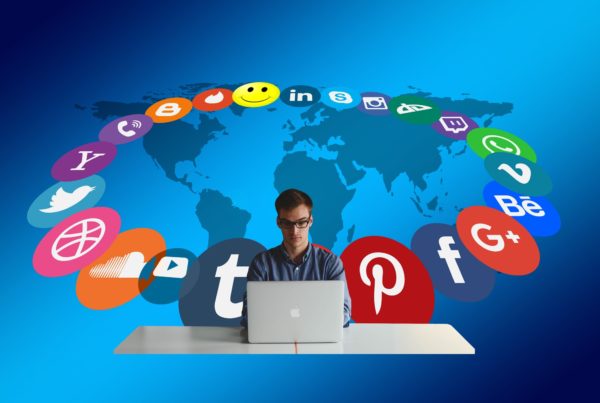
In an uncertain economy, customer retention can be the difference between staying afloat and going under. Read on to discover how to quantify loyalty from customers and stay relevant in their perception. Additionally, learn strategies designed to help entrepreneurs posit their brand as a market leader in the economic battleground of 2020 and beyond.
Why Is Customer Loyalty Important?
Depending on market share, positioning, and the fluctuation of the markets, a company might need to make adjustments to their customer retention strategy. For example, a business with a low market share in a growing market should focus on attracting customers primarily, with a secondary retention strategy. On the other hand, a company with a strong market share in an uncertain marketplace should be focusing on customer loyalty.
Following the global pandemic, most businesses are in the latter position despite clear opportunities for growth. A leader who offers personalized attention to their client base during challenging times, including useful information or a discounted service could instill customer loyalty for years to come.
Customers who haven’t developed brand loyalty are not likely to make repeat purchases or to sign an extended service contract. In an economic climate where people aren’t risking their money on trying something new, businesses need to concentrate on client retention.
How to Calculate Customer Loyalty & Retention
((CE-CN)/CS)) X 100
CE = number of customers at the close of the period
CN = number of new customers during the period
CS = number of customers at the beginning of the period
So, if a company starts the period with 500 clients, loses 50, but gains 100, it’ll have 550 at the end of the period.
(550-100)/500 x 100 = 90
For most industries, a 90% retention rate is excellent. To stay profitable during the difficult economic situation brought about by COVID-19, aim for a retention rate of at least 90%. If it’s any lower, try and implement as many of the following tips as possible:
Gather Genuine Feedback
Although many small business owners would rather not face negative feedback, it’s one of the most effective methods of developing loyalty. Pay extra special attention to customers who have criticisms, always record it, and be vigilant for repetition. If a complaint arises more than one or two times, it’s probably worth investigating, with a view to improvement. Humility and awareness of faults are essential to moving a company through a challenging economic environment.
Finding a way to compensate or apologize to a client who has had a bad experience can be a smart way of building loyalty. Most consumers stay loyal to a brand that has made a mistake if they feel it handled the situation adequately.
Bring a Personal Touch
Social media marketing gives brands a direct channel of communication to consumers, as well as one of the best tools to build customer loyalty. Entrepreneurs cannot underestimate the power of smart technology and social media marketing. Sending personal birthday messages, interacting on socials, responding to complimentary emails, and selling personalized content are highly effective means of adding a personal touch.
Create Virtual Content
Business owners can use the extra time during lockdown to experiment with creating online content to keep their client base engaged. People love watching vlogs documenting the processes behind making products or providing services. The public continues to express a more profound interest in what goes on behind the scenes of their favorite brands. So, it’s an astute way a company can remain fresh in the minds of their target audience.
Inspirational and motivational content that delves into overcoming challenges might be more relevant to inspiring loyalty from a different type of customer base. Organizations should conduct research on what their buyers are looking for and deliver consistently to reap the benefits of creating content online.
Staff is a Firm’s Greatest Resource
In the wake of the COVID-19 peak, the public is increasingly interested in how businesses are treating their staff. Modern consumers, especially Millennials and Zoomers, don’t feel comfortable buying from brands they perceive to be unkind. The team is often the greatest expense for a company — and therefore, its greatest asset. By taking care of staff, a brand can inspire loyalty from within. This type of dedication will be reflected in the productivity of a workforce that feels valued.
Mirror the Ethics of Your Customer Base
Modern consumers want brands to have a conscience while genuinely caring about their impact on the environment, as well as the staff. Collaborations with influencers and charities and fundraising events communicate an ethical message to consumers. In addition to building trust in a brand, expanding reach in this manner potentially exposes it to a broader audience.
Making sure branding is aligned with upcoming trends is imperative, and it should be discussed and actioned every quarter. Current trends are for sustainability, eco-friendly products and services, and brands with a message.
Trends can change rapidly. As such such, businesses need to adapt to stay relevant, continually seeking feedback from loyal clients to find out their current moral priorities.
Use Email Campaigns to Communicate Your Message
Email campaigns have been around for a while, and are not necessarily innovative. Accordingly, they get a bad name, predominantly because most businesses get it wrong. An email is the chance to get into a customer’s mind daily or weekly — never more than once a day. Instead of sending emails promoting products or attempting a hard-sell, provide meaningful content that’s useful.
Communicate a company’s message by writing or sharing relevant blog posts in the brand’s unique voice. Let customers know about collaborations, initiatives, and future plans, in addition to sharing uplifting information about what the team’s been doing. Find creative ways of giving your clients what they want, so your brand continues to stay fresh in their minds.
Discover Digital Marketing Strategies to Get Through the COVID-19 Pandemic
For further insights into how to strengthen your digital marketing strategy, the VujaDay blog has plenty of ideas to help your business navigate the COVID-19 economy.



